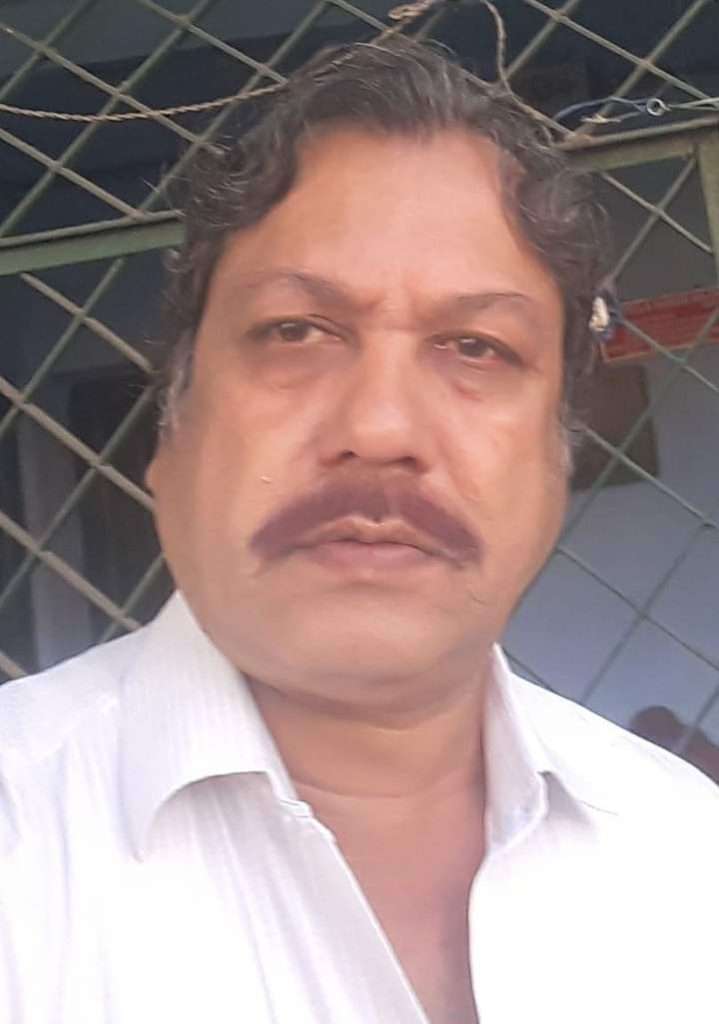Ever since our childhood days, we have had the opportunity of spending our time in a spiritual atmosphere in and around the city of Sambalpur. In the old city, there are many mutts and temples built by the Chauhan kings, and the specialty is that the temples have been dedicated to diverse deities, i.e., Devi, Siva, Jagannath, Vishnu, and others, and the devotees visit all the temples without any discrimination. Temples have also come up in later times in the new city. What to speak of the city, there are many temples both old and new within a radius of thirty to thirty-five kilometres from the city. The Maneswar Mandhata Baba temple, the Huma Bimaleswar temple, the Mukteswar temple, the Saranda Vishweswar temple, and the Ghanteswari temple are prominent. The spiritual atmosphere of these places, along with their round-the-year festivities and religious programmes, has instilled in us children a kind of intense feeling towards God and spiritualism. In a way, this has shaped our sensibilities as human beings.
Approximately twenty kilometres from the city of Sambalpur stands the beautiful and majestic Shri Shri Shri Girigovardhan temple at Sahaspur on the Sambalpur-Sonepur highway. Situated on a hillock by the main road (highway), the temple rises sixty-five feet high with one hundred and eight steps leading up to it.
The Myth — The Girigovardhan myth is known to almost everybody. When Lord Indra got infuriated with the people of Vrindavan and poured incessant rains with lightning and thunderstorms, Lord Krishna raised the Girigovardhan hill on one of his fingers and gave shelter to the people. Later, when Lord Indra realised that Krishna was none other than Lord Vishnu, he brought his wrath under control and begged for mercy. Since then, Lord Krishna has also been worshipped as Girigovardhan. There are temples throughout the length and breadth of the country, mostly on hills and hillocks, dedicated to the Lord. The myth denotes Krishna’s power and love for the people. It is believed that when we are in distress and pray to Him, He will definitely come to our help. Shrimad Bhagwat narrates the myth of Krishna’s divine power in lifting the Girigovardhan hill on His little finger for seven long days to give shelter to the people of Vrindavan against incessant rains, thunderstorms, and floods caused by Indra’s wrath. When, at the instance of Krishna, the people of Vrindavan started worshipping the Girigovardhan hill as it provided food to their cattle instead of worshipping Indra as the provider of rain, Indra wanted to punish them in anger. But later, he realised his folly and withdrew the inclement weather and rains. Krishna then advised him to follow his Dharma or duty.
The Background — Approximately five kilometres from Sahaspur stands the Haldi Mutt against a natural and scenic backdrop. The history of the mutt is very old. The tradition of Girigovardhan worship was there in the mutt since long. Ninety-seven years ago, the people of Sahaspur brought the tradition to their village from Haldi and started Girigovardhan Puja. At that time, there was no temple on the hillock. So a flag was furled on top of the hillock, and then the festivity started in the village.
The Temple — The Girigovardhan temple on a hillock in Sahaspur got underway in the year 2007 and is still under construction. Artists from Nayagarh, Odisha, were engaged in the construction of the temple. The specialty is that ladies and gents from not only Sahaspur but also from nearby villages lent labour service in carrying material to the hillock and in the construction work of the temple. The temple, with a ‘Garbhagriha’ and a ‘Mandapa,’ measures sixty-five feet high. Coloured in white, the temple is beautifully sculpted with excellent interior decoration. But the overall sculpture of the temple is yet to be completed and awaits finishing. Along with the main deity of Girigovardhan, Siva, Laxmi, Ganesh, and Hanuman will be the side deities around the temple on completion.
Festivity — The Girigovardhan Puja has entered its 97th year in Sahaspur. On the occasion, every year cultural programmes like Opera, Orchestra, Danda, and Hasya Kavi Sammilani are organised for the entertainment of the people. Sanchar, which is dying out as an art, has been kept from the beginning. Religious programmes like ‘Bhagawata’ and ‘Parayana’ are held for the devotees throughout the night. Every year ‘Annakot’ is organised, wherein almost fifty thousand devotees get ‘Prasad’ of the Lord. The festivity continues for one day, and a market sits to cater to the needs of the devotees and visitors. On the occasion, the temple on the hillock gets decorated with lights. The speciality of the Puja has been maintained till this day. Folk music arts like Sanchar, Danda, and Mahila Kirtan have all along been given priority. People get ‘Prasad’ irrespective of caste, creed, and colour in the ‘Annakot’ every year. This has united the people of the area. In the morning, after the ‘Kalasa Yatra’ by women, religious programmes are held in the temple, and cultural programmes are held in the evening.
Places Around — Trees, greenery, hills, and green fields around the hillock of the temple add to its beauty. The Mahanadi is also flowing not far from the temple. The Haldi Mutt, the Jhadeswari temple of Dhama, the Bimaleswar temple of Huma, and the Durga Dadhibaban temple of Arda are the nearby spiritual centres. ‘Bhimpad’ on the hillock itself draws visitors towards the site. It is believed that the Pandavas, during their exile, had come to this area and Bhima left his footprint here while crossing the hillock.
Management — The temple is managed by a local committee, and the organisation of the festivity depends upon ‘Chanda’ and donations from people of the village and nearby villages. According to a member of the committee, the temple is yet to enter the government records. The temple requires further construction and a Foundation Ceremony. Since neither the temple nor the deity are founded with religious rites, a temporary deity of Girigovardhan is installed for the Puja and immersed immediately after it is over.
Future Plans — The local committee is managing the temple and the festivals, mainly the annual Girigovardhan Puja, on its own. Since the temple is not yet complete, it needs funds, which will be mobilised through ‘Chanda,’ voluntary donations, and Life Membership. It would also like to get any other help from the government as per rule and schemes. Managing a festival for long ninety-seven years for a single village is no easy task. We should really be thankful to the organisers for managing festivals like Sitalsasthi, Dhanuyatra, and Girigovardhan Puja. The grand festival is about to complete a century in the village of Sahaspur and has gained immense popularity in the area. It has also been able to forge a bond of unity and solidarity amongst the people while adding to the spiritual atmosphere in this part of the district of Sambalpur.
The views expressed are the writer’s own)

Mr. Prafulla Kumar Majhi,
Retired Asst. Director, A. I. R, is an eminent Scholar and freelance writer in English & Odia. His areas of interests are sociocultural, economic, literary, historical and analytical studies and writings.
Email: airprafulla61@gmail.com
Mobile.9861007190

